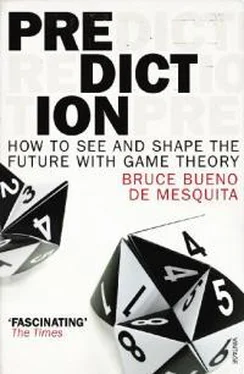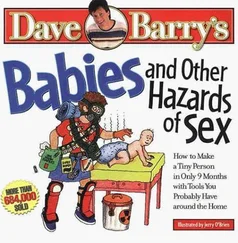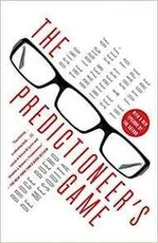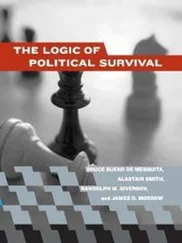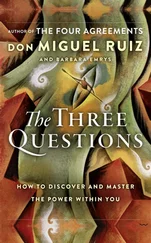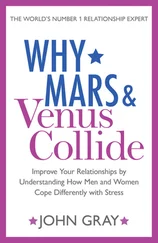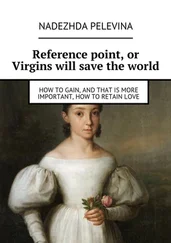Moe beat Mutt right off the bat—by a vote of 9 to 6 (blocs 1 and 2 voting for Mutt and the rest voting for Moe, as you can see from the rankings listed earlier). Mutt, being the loser, was dropped from consideration under the seemingly reasonable supposition that more people wanted Moe than Mutt (9, as we saw, to 6). Fair enough. Everything after that was gravy, because my client’s main concern was to beat Mutt. But then my client also liked the idea of choosing Curly. He thought that would make him look even better in retrospect, and besides, he was fond of Curly and thought being CEO would be a nice way to cap Curly’s career.
The selection committee then considered Moe and Jeff in accordance with the agreed-upon agenda. Jeff beat Moe as handily as Moe had beaten Mutt. Bloc 1 wanted Mutt most of all, but now, confronted with a choice between Moe and Jeff, they went for Jeff. He was their second-place choice, while Moe came in last for bloc 1. Blocs 4 and 5 also thought Jeff was a better prospective CEO than Moe. Only blocs 2 and 3 favored Moe over Jeff. That gave Jeff 9 votes to Moe’s 6. Mutt having already been eliminated, no one on the committee stepped back to ask what would happen if they took the opportunity to choose between Jeff and Mutt. As you can see from the bloc preferences, there was yet another winning coalition (blocs 1, 2, and 3) with whose support Mutt would have beaten Jeff, but again, Mutt had been taken out of the picture by Moe in accordance with the elimination rules agreed to.
Mutt and Moe, the apparent front-runners, were now out of the race. Moe beat Mutt, and Jeff beat Moe. Jeff, Larry, and Curly were still standing. Jeff and Larry each had first-place supporters, so they were run against each other next. Blocs 2, 3, and 5 favored Larry over Jeff. Jeff was out, leaving a final choice between Larry and Curly. Of course you can easily see that Curly is going to defeat Larry. Blocs 2, 3, and 4, in the ever-shifting winning coalition of voters, favored Curly over Larry. Curly, being the last man standing, was the new CEO much to (almost) everyone’s surprise. Still, they felt the process had been fair and square, and in its own way it was.
No one seemed to notice that the agenda had decided the outcome. It so happens that Larry was the only candidate that Curly could have beaten. If the agenda had been different, Curly would have lost. Just as Curly could not beat anyone other than Larry, so too could Larry not defeat anyone other than Jeff. Moving Larry up in the agenda would have wiped him out and Curly with him. In fact, because preferences went around in circles (or, to put it technically, they were intransitive), an agenda could be put forward to make any of the candidates into the winner fair and square.
When the vote was over, the committee member with whom I had talked earlier invited me to lunch. He had one question for me: Did you have anything to do with picking our CEO? I smiled and changed the subject. He was sure I did, and I knew he knew, but I was sworn to secrecy. The lunch was great.
SORRY, EINSTEIN: GOD DOES ROLL THE DICE
As we see in moving from the prisoner’s dilemma to the bank example to the voting strategies, even in relatively simple games involving relatively few players there can be multiple outcomes. This fact adds yet another strategic dimension to decision making, particularly as games, in the real world, are often played over and over between the same players.
Any time a game has more than one possible result, there is a special type of strategy (called a mixed strategy) that can influence what happens. In a mixed strategy, each player chooses actions probabilistically—say, by rolling dice—to influence what other players expect to get out of the game. Einstein’s God may not have played dice with the universe, but we mortals definitely roll the dice with each other.
Whenever you watch a football game and complain about a coach’s choice of plays, you probably were watching a mixed strategy at work. For instance, when the ball is on the one-yard line, the play that is most likely to get the ball across the goal line is for the fullback to jump over the pile of players in front of him. Yet coaches often have the quarterback pass the ball or hand off to a running back. The reason: if a coach always called for the fullback to go over the top, the defenders would concentrate the defense at that point, and the play would probably fail. By mixing the calls, the offense forces the defense to spread out, thereby improving the odds of success over repetitions of the situation. Interestingly, this sort of mixing of strategies carries important lessons for business, politics, and lots of other parts of life. Rolling the dice is one way to alter how other people perceive a situation.
Using strategies that involve mixing up moves to create a change in expectations is something that comes up all the time. Although applied game theorists often like to ignore these complicated “mixed strategy” approaches to problems, they do so at their own peril. Rolling the dice can really make a difference in how things turn out.
Examples of such gambling are all around us, and some great movies roll the dice very cleverly to create climactic moments. Who can forget in The Princess Bride the back-and-forth over which wineglass is poisoned, and the clever resolution (both were poisoned—it pays to build up an immunity to the poison you plan to use on yourself and others). Or how about the fabulous scene from The Maltese Falcon in which Sydney Greenstreet’s character, Kasper Gutman, desperately wants the jewel-encrusted bird? Only Sam Spade (Humphrey Bogart) knows where it is, and Sam Spade is no fool. Gutman threatens that Joel Cairo (Peter Lorre) will torture Spade to find out where the bird is, but Spade counters, “If you kill me, how are you going to get the bird? If I know you can’t afford to kill me till you have it, how are you going to scare me into giving it to you?” Here Spade, like any good game theorist, questions the credibility of Gutman’s commitment to make him talk. We know and Sam Spade knows that, without a real commitment to kill him, Gutman can’t get him to talk. But Gutman is no fool either. He knows just how to make the dice tumble, creating the prospect that Spade will talk to save himself. After some clever give-and-take, Gutman retorts, “As you know, sir, men are likely to forget in the heat of action where their best interests lie and let their emotions carry them away.”
There it is: “Men are likely to forget in the heat of action where their best interests lie and let their emotions carry them away.” How beautifully put. He’s just explained that Joel Cairo will try to be careful not to kill Spade, but then, Cairo can get emotional, so there is also a chance that if Spade doesn’t talk he’ll end up dead. In this brief exchange we see three lovely principles of game theory at work: the question of credible commitment; the use of playing probabilistically to alter how others look at the situation; and the pretense of irrationality (the heat of the moment) for strategic advantage. What could be truer to life’s fears and calculations? How many of us would dare to stay silent given Sam Spade’s gamble: keep the bird and maybe die, or give up the falcon and (maybe) live?
With a bit of luck, it will become apparent that game theory is not limited to parlor tricks, movie scripts, and brainteasers. It is a powerful tool for reshaping the world. In the remaining chapters, we will use these foundations to see just what kind of problems rational choice theory can tackle, and how math, science, and technology now allow us to predict and engineer particular outcomes that we might otherwise assume would only be determined by a random mix of good or bad fortune and a heavy dose of human whim.
Читать дальше
